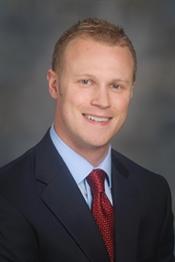Program Information
Diagnostic Workforce Study Report
D Jordan1*, D Gress2*, (1) University Hospitals Cleveland Medical Center, Shaker Heights, OH, (2) MD Anderson Cancer Center, Houston, TX
Presentations
7:30 AM : Progress in modeling diagnostic physics practice realities and staffing needs-Part 1 - D Jordan, Presenting Author7:55 AM : Progress in modeling diagnostic physics practice realities and staffing needs-Part 2 - D Gress, Presenting Author
TH-A-108-0 (Thursday, August 3, 2017) 7:30 AM - 8:25 AM Room: 108
Traditional ways to classify common diagnostic medical physics practice models (such as consultants, in-house or staff medical physicists, etc.) and practice settings (academic hospital, community hospital, free-standing center, etc.) no longer serve as an accurate means to characterize the work performed by diagnostic medical physicists in the modern healthcare environment. Furthermore, describing a service or offering as “comprehensive” may be intended to highlight the expertise of the individual providing the service, but may also imply that the service is unnecessary or excessively expensive. On the other hand, describing a service as “basic” may imply (favorably) that the cost is low, but also that the individual providing the service is less skilled or that the client is unwilling or unable to spend money or staff effort on anything which is not strictly required of them. Describing medical physics services as “basic” or “comprehensive,” or similar terms, is not helpful in moving forward.
Historically, diagnostic medical physics support requirements have been largely quantified by considering imaging equipment inventories and time requirements for routine testing. However, practice has evolved to include services and activities that do not lend themselves to effort estimates based solely on equipment inventories. The present and future needs for diagnostic medical physics services and staffing are best evaluated using a study that accounts for the breadth and depth of services needed to promote and sustain quality patient care; these services are provided today in diverse practice models and settings that will likely evolve further over time. Some medical physics services and activities can and should be quantified via a focused survey of the AAPM membership, while others are difficult and unnecessary to quantify precisely. Those that are less quantifiable are also often those that are novel, emerging, or have not yet become a universal standard practice in all institutions. As such, they are growth opportunities for diagnostic medical physics. The pace of change in medical imaging suggests that further changes will affect diagnostic medical physics practice sooner than such a study could feasibly be repeated. A model that is flexible will maintain some predictive capability if it can be used with new data as they become available, allowing this resource to remain relevant for several years even in the face of major new developments.
A new model for classification of diagnostic medical physics services is proposed and presented: The Levels of Service (LoS) model.
Learning Objectives:
1. Recall recent challenges AAPM has encountered with collecting workforce data on the practice of diagnostic medical physics
2. Understand AAPM’s future approach to characterizing diagnostic medical physics work
3. Become familiar with pending AAPM diagnostic workforce report
Handouts
- 127-35637-425554-126467.pdf (D Jordan)
Contact Email:



